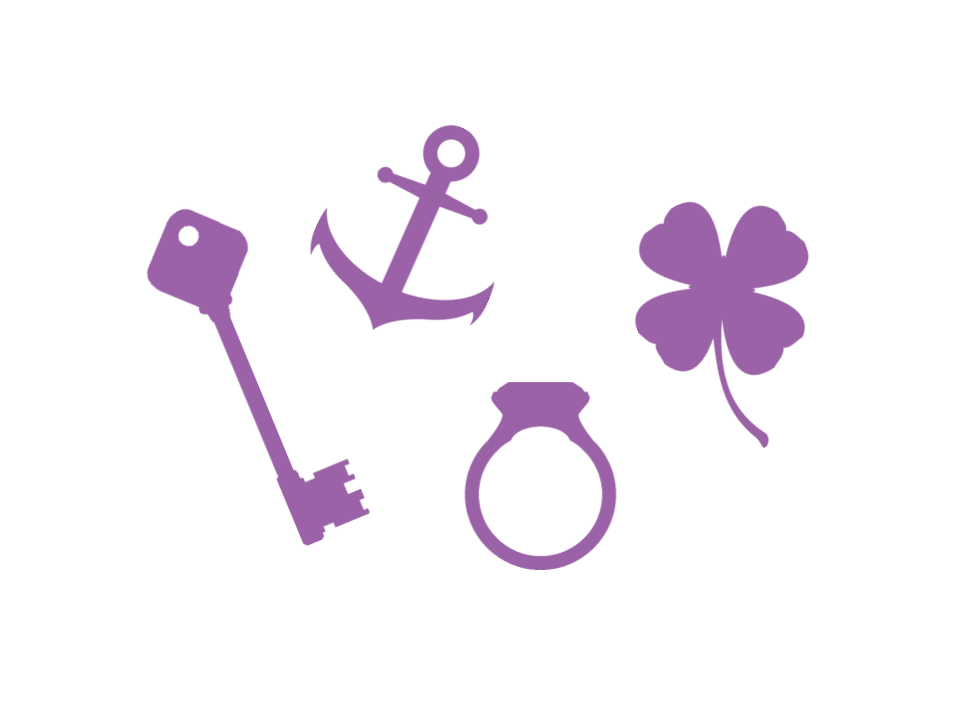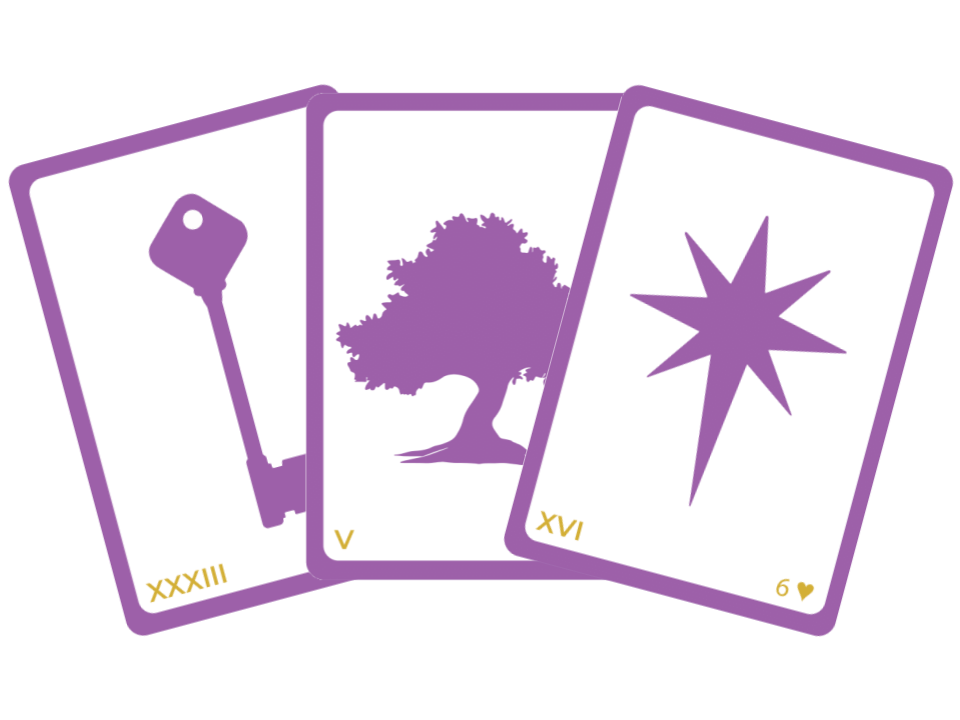TABLEAU-STYLE
[EDITED VIDEO TRANSCRIPTION]
I believe there are two key features of the Lenormand method that make it totally unique: (1) Card combinations and (2) Tableau-style layouts. The two are related. And I've explained this in another video so you might like to check it out. In this video, I want to tell you more about Tableau-style, what it is exactly, and why it's so special.
Hi everyone! I'm Layla, the Lenormand Reader, and I've been reading Lenormand almost exclusively for over 20 years. If you want to master Lenormand, you have come to the right place. I publish videos every week including tutorials and forecasts. So please hit the bell button and subscribe, so that you're always in the know.
Tableau-style layouts are an amazing and totally unique feature of the Lenormand method.
As Readers, we aspire to the Grand Tableau and similar Tableau-style layouts where we can read the cards in all sorts of amazing ways. But what is Tableau-style exactly, and what makes it so special?
Let's get into some details about this unique way of doing layouts before we get into how to read a Tableau-style layout, and let's go over why we read Tableau-style in Lenormand.
INTRODUCTION
To start with, what does Tableau-style mean exactly?
In Lenormand, the main way of interpreting the cards is to read them in combinations together.
Yes, individual cards have their own meaning and this meaning can be stretched to make sense of the card for any question or context, but the main way of reading Lenormand's cards is in sentences together in combinations.
We string the cards together to make sense of them in different ways. To read cards and sentences means that we have to have a few of them in a line.
What drives our ability to do Tableau-style layouts with Lenormand is precisely the fact that the cards are read in combinations together, in sentences. It is because cards are read in combinations that we are led to create Tableau-style layouts.
“Tableau” is a French word for board. So you would refer to the black or white board in a classroom as a "Tableau" in French. But a "Tableau" also translates into a portrait. So if you had your portrait painted you would refer to it as your "Tableau" in French.
Someone recently wrote to me to tell me that the word "Tableau" doesn't mean portrait. It does though, and I'm pretty fluent in French so I can confirm the usage. But do have a look yourself and look up any words that you have doubts about.
So Tableau-style refers to placing the cards in a portrait or a board kind of shape. Meaning not just a line or not a specific shape like say a horseshoe spread in the Tarot.
In a Tableau, we typically have a simple geometric shape like a square or a rectangle. And the advantage of these simple shapes is that they contain many lines of cards and therefore many sentences that we can read and get lots of insights from.
What's so special about Tableau-style layouts is that cards are read over and over as part of different lines - like horizontals, verticals, and diagonals.
So this makes for a very engaging experience when reading the cards, especially with bigger spreads like the Grand Tableau, because there is so much to dig out from so many lines to read.
Examples of Tableau-style layouts are the Grand Tableau of course, and the nine-card portrait. These are the classic ones because they are straightforward in their shape and they have a long history of being practiced as Tableaus.
But there are other layouts that can take on Tableau-style features - meaning having their cards being read as part of different lines. My own Hourglass and Diamond layouts are not rectangular or square, but they have Tableau-style features because their cards can be read as part of different lines in these configurations. You can find out more about these layouts here and here.
So with this background about what Tableau-style is, I want to give you some tips to read the cards in this way, and how you can make the most out of your Tableau readings.
1. READ THE MAIN LINES
For starters, you want to read all the main lines.
Read the rows, read the columns, and read the diagonals. The rows and columns normally give you the main storylines, and the diagonals will offer you additional details or confirm the storylines.
In a large layout like the Grand Tableau, there are many many diagonals so you might not end up reading all of them, all the time. Instead, you might just pick out the ones that you think are most relevant to the question, or you know the ones that involve certain cards that you're focusing on.
In a portrait, there are three rows, three columns, and two diagonals. I often use the portraits in my forecasts, like the horoscope readings, the moon readings, and others, if you follow these readings of mine.
You might have noticed that I take the diagonals as the most important lines, especially the first one in the portrait, because it has both the first and the central cards, and these are really key cards.
But it's a bit different in a Grand Tableau, where there are so many diagonals and so the diagonals are more about the details.
2. LOOK AT KEY CARD POSITIONS
The next tip I have for you when reading a Tableau-style layout is to look for key positions of the cards.
The position that obviously stands out is the central card or central cards (because sometimes there are layouts where there is more than one central card). So this is a key position to look for, and you'd expect that the central card or cards is pretty important in a Tableau-layout.
It can represent any number of things. It can represent the outcome of the reading, the main answer to the question, it can capture the main theme for us to focus on, or the main area of life to focus on. Or, it can actually represent hidden aspects of the situation. It all depends on the specific layout that you're doing, whether it's a portrait, a Grand Tableau, or another Tableau-style layout.
It also depends on how you like to interpret the central card. And as you've heard me say many times before, decide beforehand, before you do the reading, how you want to interpret the layout and the different lines in the layout. I do have a blog post to get you started with reading the central card in a line. You might like to have a look at it if you're just getting started.
Other key positions to look at are the first few cards of the layout. These are usually at the top left of the Tableau - if you read like me from left to right.
You might also look at the corner cards as well as certain groups of cards that could stick out somehow from the rest of the configuration, and that also depends on the specific layout that you're doing.
These are my suggestions. You might have others in mind. If so, please share them with me and others in the comments. It is always so helpful to know how other Lenormand Readers do things. I'm always interested to know how you might bring new things to the table. And tell me if you're aware of Tableau-style layouts and if you knew what that meant. What are the kinds of layouts that you like to use with Lenormand, I would really love to know.
3. CONNECT NON-ADJACENT CARDS
To wrap up, I have one more tip for you for how to make the most of your Tableau-style layouts, and that is to connect cards that are not adjacent to each other.
You might, for example, connect the corner cards. You might connect two cards that are at the edge of the Tableau.
There are pretty much endless ways of connecting non-adjacent cards in a Tableau-style layout - too many to cover in a video. I do cover many of them in the Master Courses and the Certification Program, so if you're interested in delving into more detail, then be sure to check these out.
But let me tell you that the way to do this: The way to connect cards that are not next to each other in a Tableau-style layout, is to look for geometric configurations between the cards.
For example, you might look for a square shape that connects four cards, you might look for a triangular shape that connects three cards.
It is super fun to look for patterns in a Tableau, and dig out amazing details about our reading. It is really what makes the Grand Tableau a contemplative process more than anything else. It is just amazing to spend a peaceful afternoon over a 36-card Tableau, just contemplating all of these interesting messages, and amazing connections between the cards.
And there are other techniques that we can use with the Tableau, like the Near and Far method, and the play between the cards. These are mainly accessory techniques that are used in a Grand Tableau, and we don't have to talk about them here but again in the Courses you might like to delve deeper.

So these are my tips for you to make the most out of your Tableau-style layouts. Again, I would really like your feedback about them, and any suggestions you might have. It is always interesting to know what others are doing.
If you didn't start with any Tableau layouts, get started with your combinations and simple lines, and you will be amazed at how quickly you pick up the pace.
Remember, the nine-card portrait is made up of three-card lines. If you can read three cards, you can read a portrait. And that does mean that you are on your way to reading a Grand Tableau!
As always, keep me posted about how you're coming along with your practice. Leave me your thoughts and your comments, and by all means send me your questions so we can answer them in our next Q&A video.
If you'd like to get started with Lenormand, then explore my Free Guides. And also have a look at the Master Guides and in-depth learning resources. I offer one of the few comprehensive Program for mastering Lenormand, so be sure to check it out.
If you like this video, please hit the like button. Be sure to subscribe and hit the bell button, and share it with your Lenormand friends.
Thank you so much for watching and I'm looking forward to our next video together!

Want To Master The Grand Tableau?
Lenormand Reader’s Handbook of Layouts will help you master all the techniques used to master Lenormand spreads - from simple lines, all the way to the Grand Tableau. Take advantage of the Three-Book Bundle to get all three Master Guides at an awesome discount!
Learn more about Lenormand Reader’s Handbook of Layouts
